Eltham Centre Displays
Since 2012 I have produced month-long Meccano displays inside the glass case in the foyer of the Eltham Centre in order to promote the South East London Meccano Club Meccano Shows.
These feature static and working models built by various club members and a looping promotional video which I produced using Adobe After Effects.
2023 display
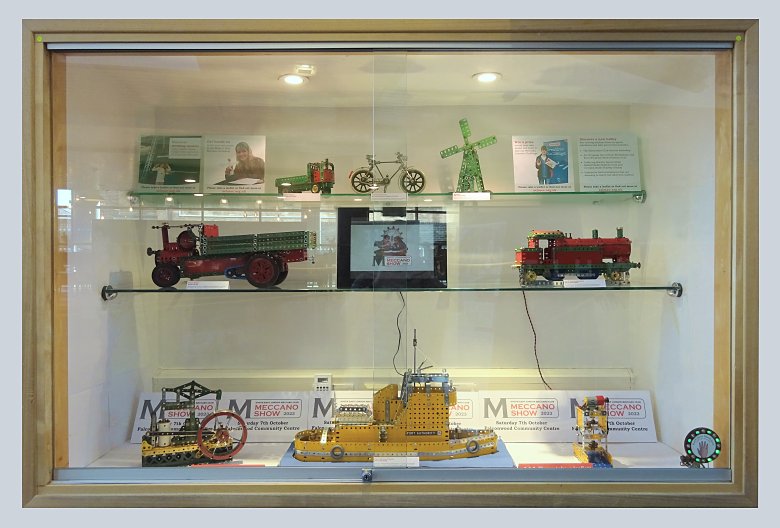
The 2023 display at the Eltham Centre
2022 display
This display featured two models from the late Peter Clay (1954–2022) who was a founder member and Treasurer of the South East London Meccano Club.
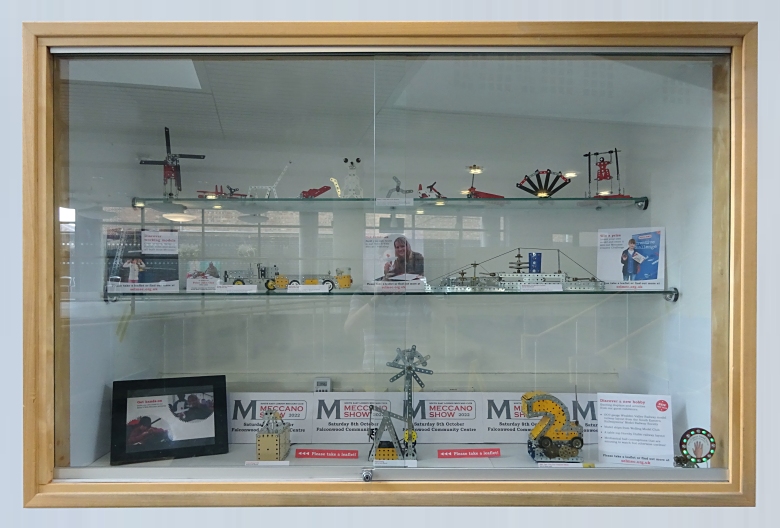
The 2022 display at the Eltham Centre
2021 display
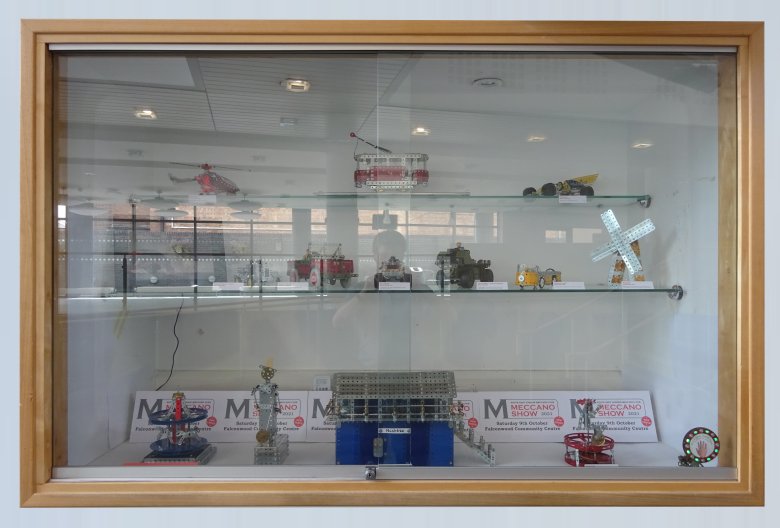
The 2021 display at the Eltham Centre
2019 display
This display featured three models from the late Adrian Ashford (1949–2018) who was a founder member and Chairman of the South East London Meccano Club.
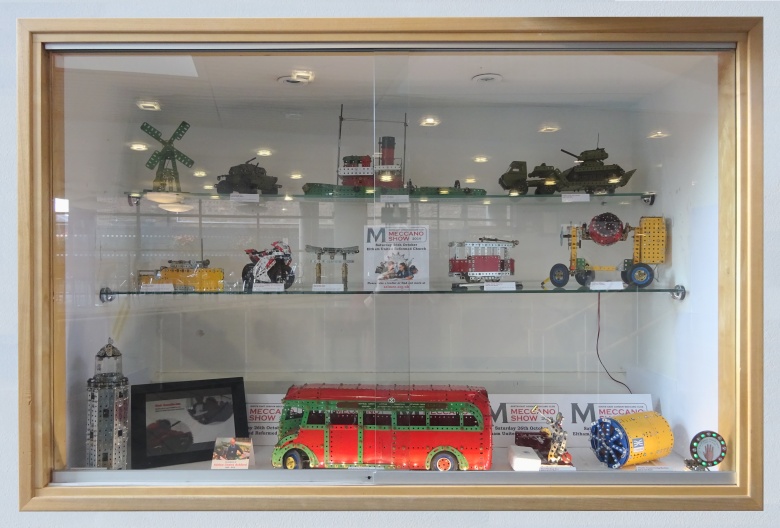
The 2019 display at the Eltham Centre
2018 display
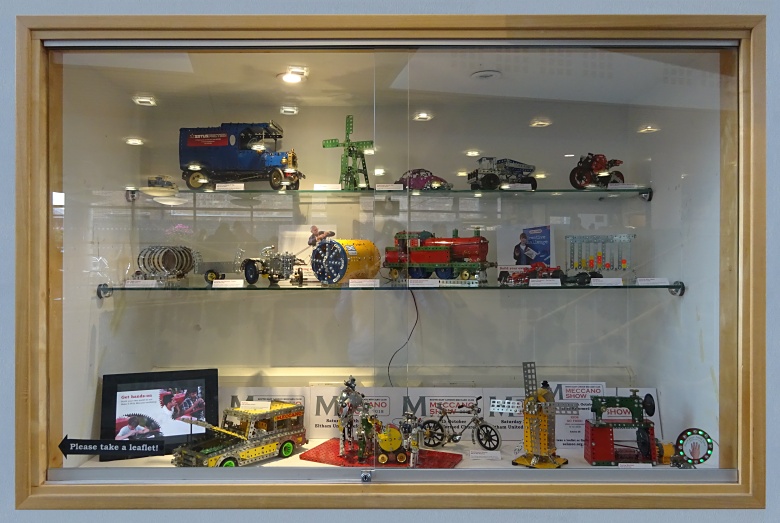
The 2018 display at the Eltham Centre
2017 display
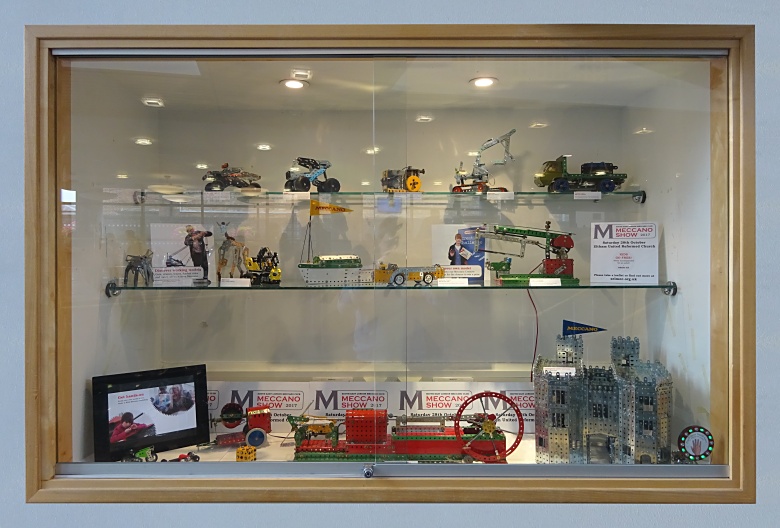
The 2017 display at the Eltham Centre
2016 display
In 2016 the South East London Meccano Club celebrated its 40th anniversary, so my display included a backscene featuring a selection of photographs taken over the years at club events, along with a video promoting the 2016 Meccano Show.
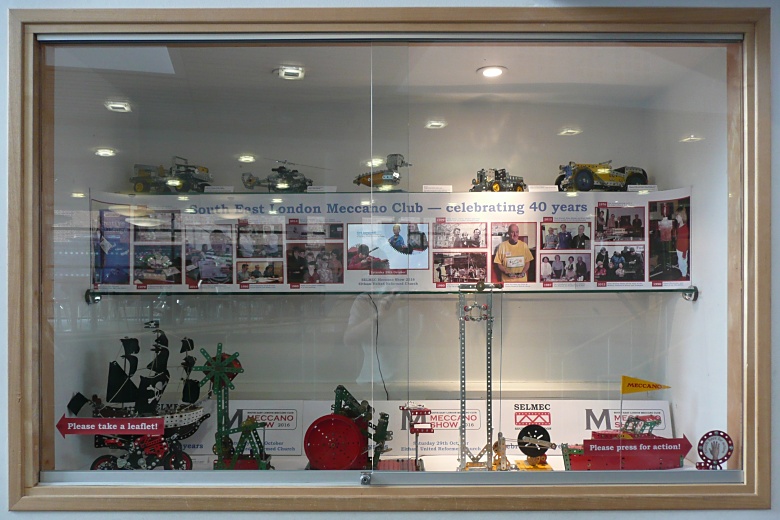
The 2016 display at the Eltham Centre
2015 display
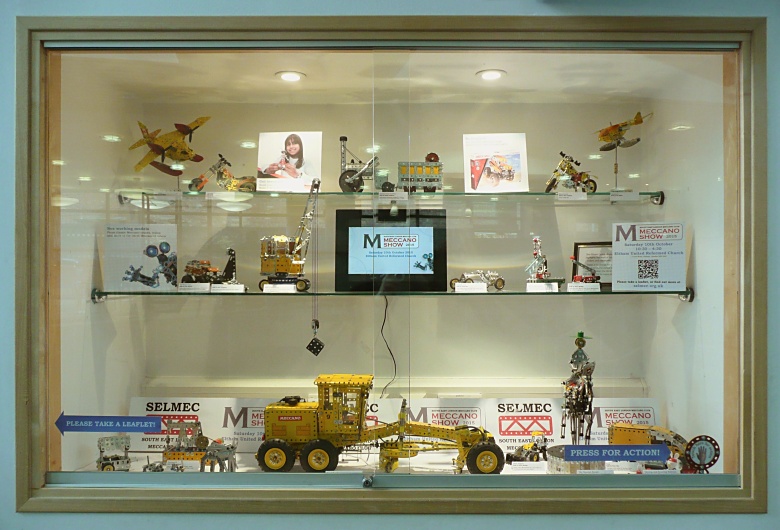
The 2015 display at the Eltham Centre
2014 display
This display featured a harbour diorama showcasing a number of maritime models built by Ivor Ellard.
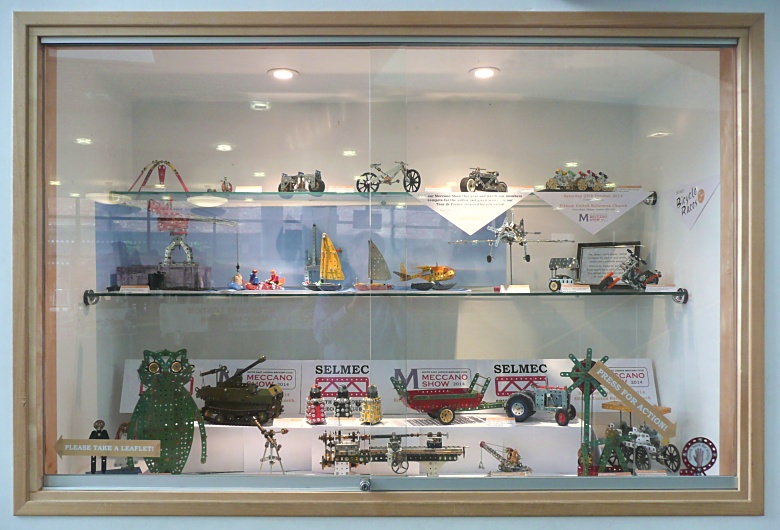
The 2014 display at the Eltham Centre
2013 display
A nationwide celebration of the 150th anniversary of the birth of Frank Hornby, the inventor of Meccano, saw my 2013 display include a backscene featuring a short biography and history of Meccano, along with a video promoting the 2013 Meccano Show.
An O gauge model of a Hunslet steam locomotive, built by Chris Warrell, travelled back-and-forth in front of the backscene in recognition of Frank Hornby’s contribution to the model railway hobby.

The 2013 display at the Eltham Centre
2012 display
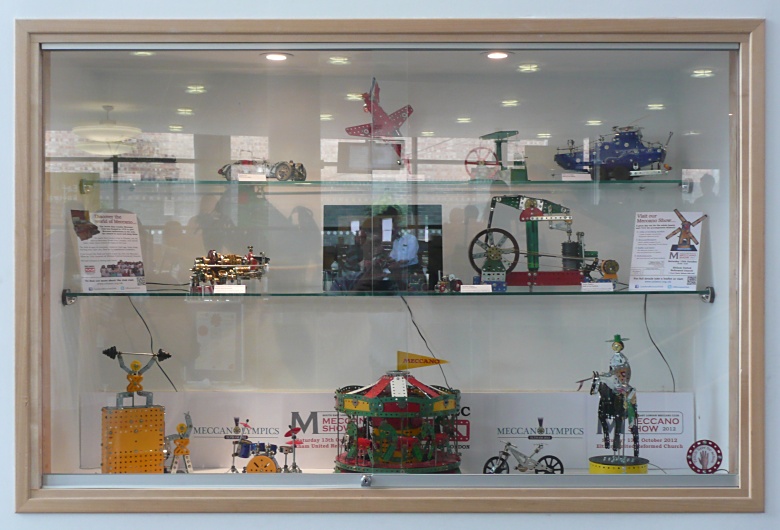
The 2012 display at the Eltham Centre
Display case controller
In order to allow the use of working models in the display I designed a controller based around the Atmel ATmega328P used in the Arduino Uno microcontroller board.
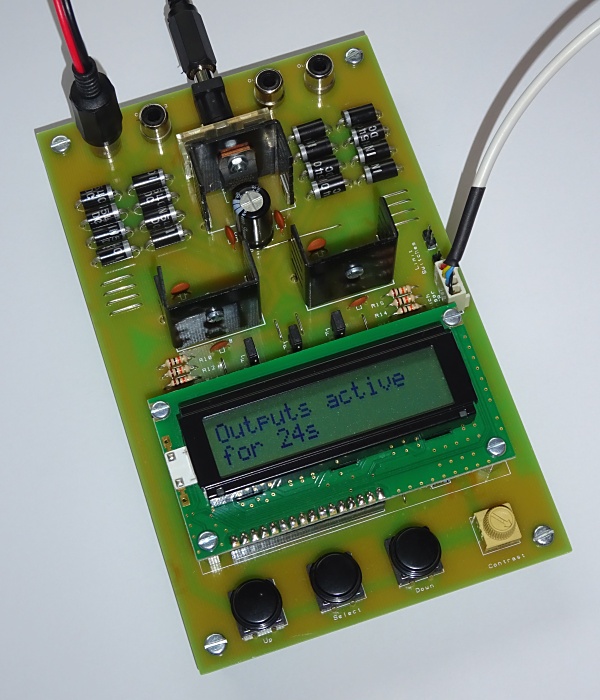
The display case controller
To activate the models visitors place a hand over the touch sensor at the bottom right of the glass display case:
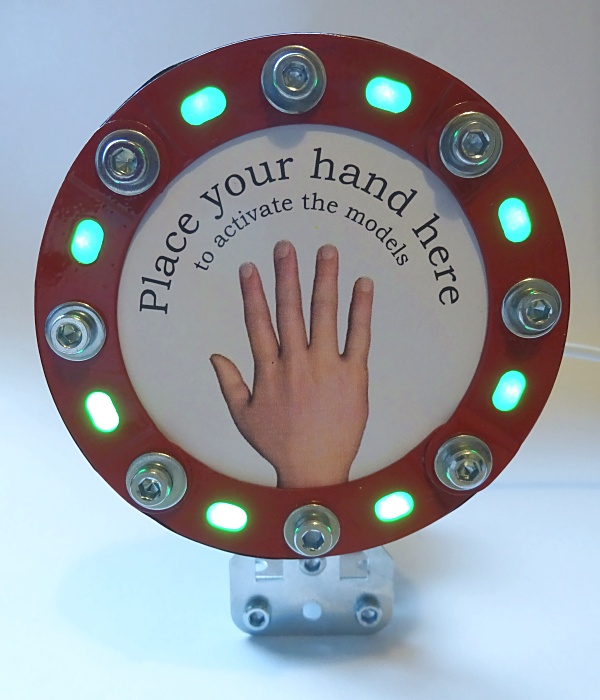
The touch sensor that connects to the display case controller
Here is a run-down of the controller’s features:
- Full-colour LEDs around the touch sensor illuminate in a chaser pattern to attract attention.
- Backlit liquid crystal display and three buttons to view and adjust settings.
- Pulse width modulation (PWM) control of up to four models via Outputs 1 to 4, with independent motor start and end speed settings to allow for soft-starting or kick-starting.
- Direction of Output 1 motor settable in software, allowing for models such as locomotives that need reversing at each end of a track.
- Direction of Outputs 2 to 4 settable via jumper links on the PCB.
- Output current 2A maximum per output or 4A total across all outputs.
- Variable ramp time setting from 0 to 60 seconds for soft-starting or kick-starting.
- Variable run time setting from 10 seconds to 30 minutes.
- Two switch input headers, primarily intended for limit switch use.
- Fail-safe watchdog timer in software resets the system in the event that motor interference or power supply brown-outs crash the microcontroller.
- Persistent storage of settings when the power supply is disconnected (this is required because the display is switched off at the mains at night via a timer).